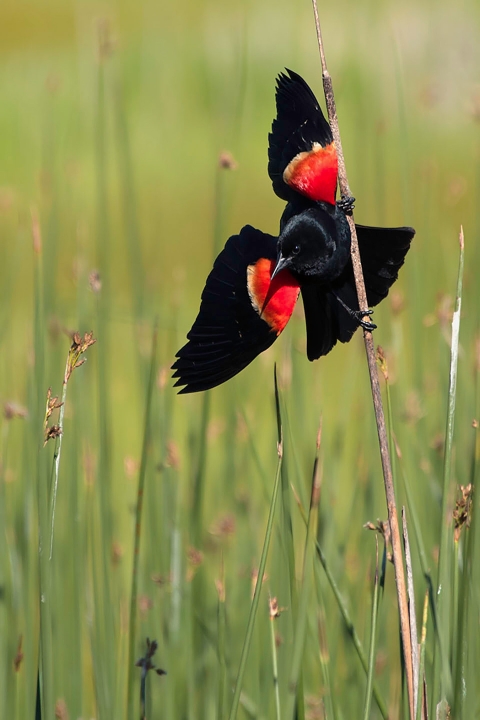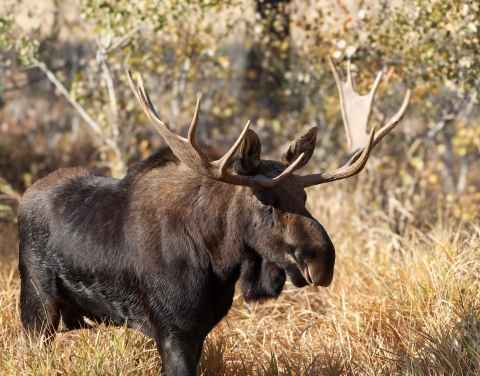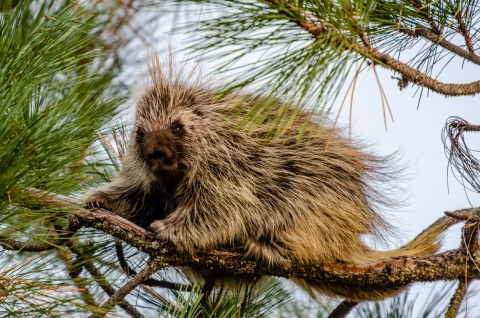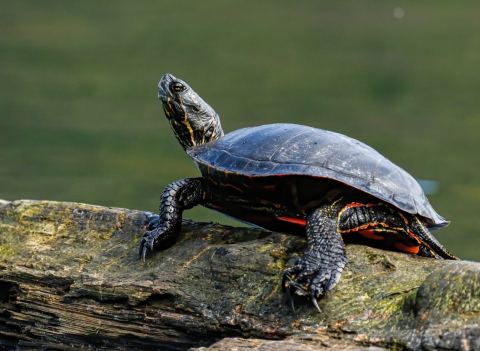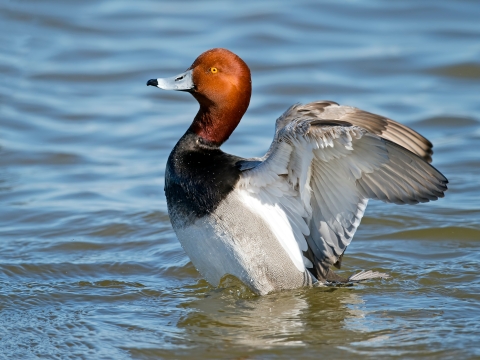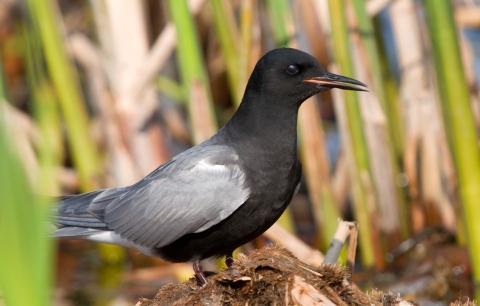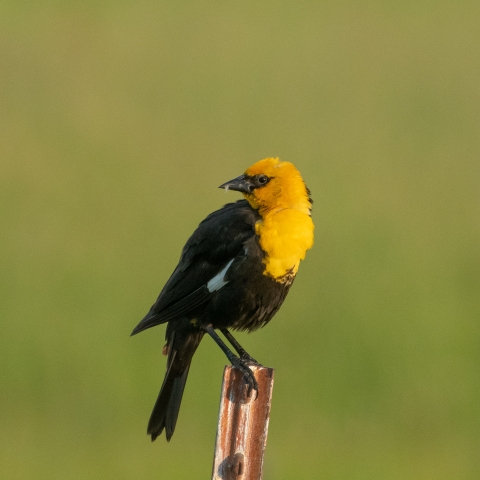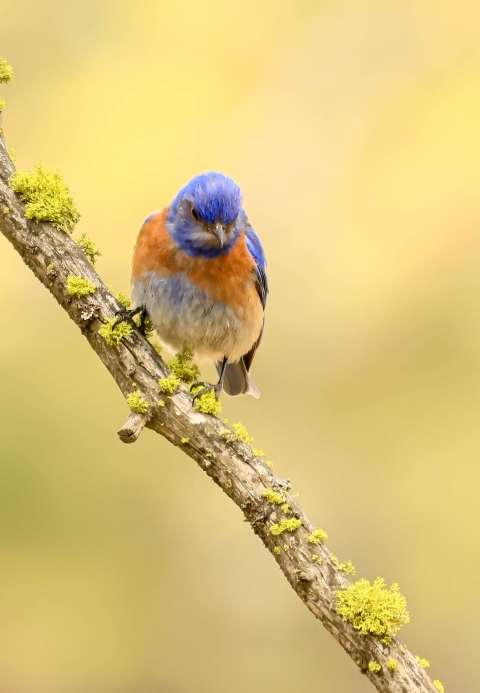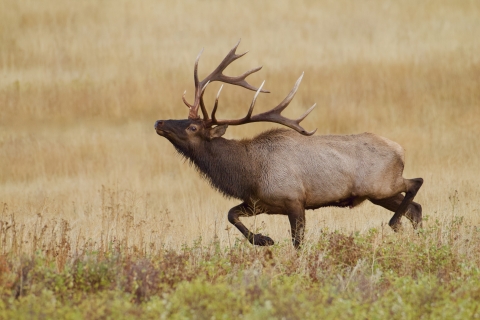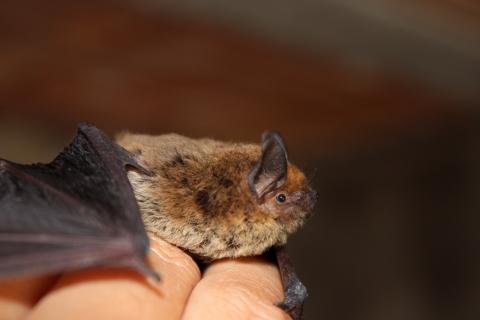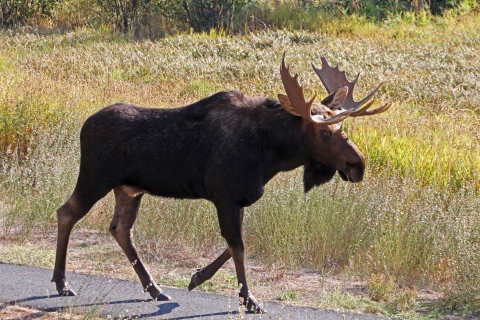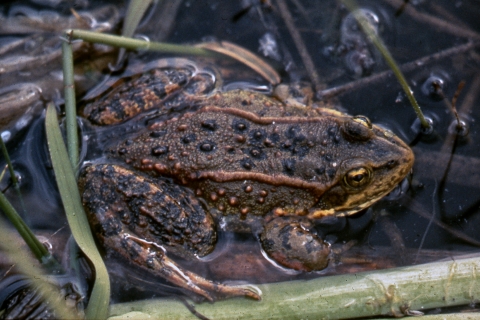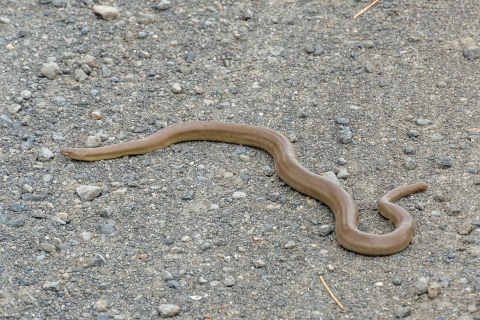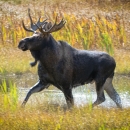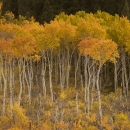Seasons of Wildlife
Over 180 breeding, resident, and migrating bird species can be found at Turnbull National Wildlife Refuge during the different seasons. Moose, elk, coyote, beaver, and river otter are among the several species of year-round residents often observed during the early morning or evening hours. A partial list of the most common, charismatic, or significant species can be found on iNaturalist. A complete list of species is listed at the bottom of this page.
A complete list of flora found at Turnbull is available online courtesy of Eastern Washington University.
Spring
Turnbull during the spring is an exceptional time of year to see an abundance and diversity of wildflowers and wildlife. Numerous waterfowl are common during the spring migration and congregate on the 300 plus wetlands found on the Refuge. The migration usually begins in March at the time of spring break up. Tundra swans, Canada geese, northern pintails, American widgeon, canvasbacks, ring-necked ducks and goldeneyes are some of the species that are often seen during this time period. The spectacular western bluebird also arrives at this time with many other migrating song birds soon to follow. The Refuge offers a plethora of wildflowers that peak in mid May. Arrowleaf balsamroot, camas, prairie star and Lomatium are just a few examples of the beautiful flora found on Turnbull.
Summer
Parents of many species of animals tend their young during the summer months. Because the Refuge usually experiences hot, dry periods during this time period, it is best to visit in the early morning and evening hours to get a better chance of observing waterfowl broods, elk and moose calves, and other young. Listen for the raspy screech of the Great Horned Owl young long since fledged but still dependent upon the parents throughout the summer months. Look on the larger wetlands or to the sky to see flocks of American white pelicans that frequent the Refuge during the summer.
Fall
Fall months bring cool weather and cool colors. Aspen and dogwood leaves turn buttery yellow, gold and crimson and provide a warm contrast to the dry grassland. Mule and white-tailed deer bucks spar to test strength and endurance, and elk bulls can be frequently heard bugling. During the fall, tundra swans are often observed on the open water of the larger wetland sloughs. Redhead, gadwall, mallard, Canada geese, and other waterfowl and water birds may also be observed.
Winter
Several species of birds and mammals are year-round residents at the Refuge. Hairy and downy woodpeckers, northern flickers, 3 species of nuthatches, and red crossbills are a few of the songbirds often observed during the cold winter months. Look and listen for other wildlife signs including animal tracks in the snow and chewed or rubbed bark that tell their own wintry story.
Featured Species
The diverse landscape of the refuge consisting of 60% coverage of ponderosa pine forest, 17% wetlands, 23% prairie habitats and a small, but critical proportion of riparian riparian
Definition of riparian habitat or riparian areas.
Learn more about riparian habitat (<1%) supports a high diversity of wildlife species. Birds are the most numerous group of vertebrate wildlife with over 200 species using the refuge, 124 of these species nest here including several waterfowl species, marsh birds, shorebirds and songbirds. There are 45 species of mammals that call the refuge home including 11 species of bats, Rocky Mountain elk, moose, cougar, badgers, beaver and flying squirrels. Twelve reptile and amphibian species have been observed in refuge habitats including the rubber boa, long-toed and tiger salamanders. By far the most abundant group of animals on the refuge are the invertebrates. The refuge is currently working on compiling a list of invertebrate species. A recent butterfly inventory has identified 51 species on the refuge.
Birds
Turnbull's wetlands provide important breeding and migration habitat for 17 species of nesting waterfowl and 8 additional waterfowl species that either winter on the refuge or stop over during fall and winter migration. Through most of the refuge’s existence, management of waterfowl habitat has been the primary focus of refuge staff. Starting with the restoration of several wetlands drained for farming within the newly acquired tracts, the refuge worked to improve nesting cover and feeding habitat as well as creating vast sanctuaries where birds could nest, feed and raise their young undisturbed. With the completion of the Refuge Habitat Management Plan in 1999, the habitats of all other refuge bird species are being considered using a guild approach that groups species by the habitat structure they use for nesting and feeding. Habitat management guidelines and objectives have been developed to restore and maintain habitats for species using tree canopies, tree and snag cavities, shrubs, ground cover, and burrows. For a list of recent bird sighting, please visit the Turnbull eBird page.
Redhead
The redhead is the most common duck species nesting on the refuge with an average of 500 breeding pairs. Redheads are diving ducks that nest overwater in stands of emergent plant vegetation. Nests are made by weaving stems of cattail and hardstem bulrush through the upright stems of these species. The bottom of the nest often touches the water surface. Redheads prefer to build their nest within 10-12 feet of open water and in water depths greater than 18 inches. The large permanent wetlands that were restored on the refuge are key breeding habitat for this species.
Trumpeter Swan
The snowy white trumpeter swan is the largest North American waterfowl. Unlike its smaller cousin the tundra swan, which uses the refuge only during migration, the trumpeter swan is a permanent resident in the refuge area. Listen for its call which gives it its name.
Cinnamon Teal
The cinnamon teal is a distinctly western duck species whose greatest nesting densities occur in the wetlands of the Intermountain West. Among dabbling ducks that nest on the refuge, the cinnamon teal is second only to mallards in abundance. Cinnamon teal nest in uplands in grass near the edge of wetlands. They are most often seen on the shallow flooded edges of wetlands with sparse vegetation.
Black Tern
A flash of silver gray low over the water of refuge wetlands signals the arrival of this elegant little tern. Over 200 nesting pairs call Turnbull their home. Black terns nest in small colonies of less than 20 pairs, but have been found in areas with over 100 nests. Their nests are floating platforms constructed on mats of dead cattails and hardstem bulrush that support 2-4 eggs.
Yellow-headed Blackbird
A raucous denizen of the marsh whose song sounds like a rusty gate. These birds nest over water in large cup nest woven around hardstem bulrush stems. The best territories are located at the edge of a large open water area. It is thought this facilitates the capture of damsel and dragonfly larvae as they emerge to pupate on the hardstem bulrush stems.
Western Bluebird
A member of the thrush family, this short distant migrant is among the first to arrive in the spring. As its name indicates, it is found west of the Rocky Mountains from British Columbia to Mexico. A portion of Western bluebirds are considered resident throughout their range while others are considered medium-distance migrants who either move to lower elevations or fly south to the American Southwest and Mexico. Although chiefly insect eaters during the breeding season, they will add fruit to their diet in winter which might explain the variety of migratory habitats. It brings a splash of color to the habitat that is not fully awakened from the long winter months. Males are brilliant blue with rusty breast, back, and sides. This secondary cavity user is commonly found at forest edges and open pine woodlands.
Mammals
Mammals utilize a variety of habitat structures including cavities in snags and live trees, large downed logs, grass and shrub ground cover, rock outcrops, and burrows in deeper soils. Species can be grouped by these layers into guilds. Cavity users include the northern flying squirrel, several species of bats, and raccoons. Species that require large downed logs include the yellow-pine chipmunk and wandering shrew. Our burrowers are one of the largest and most diverse group with coyotes, river otters, badgers, Columbian ground squirrels, voles, and pocket gophers as some of its members.
Rocky Mountain Elk
The bugling of bull elk is frequently heard in the morning hours of early fall as they build up their harems for the breeding season. Although once absent from much of eastern Washington, the Refuge is now home year round to a herd of about 300 elk. The absence of hunting on the refuge until recently concentrated elk on the refuge during the fall and winter making elk viewing a popular activity on the refuge especially in the early and late hours of the day. This large concentration on a relatively small area has also come with some problems. Intense browsing of aspen stands has resulted in a loss of regeneration needed to sustain this important habitat on the refuge. Elk also leave the relative security of the Refuge at night to forage in neighboring alfalfa fields and hay stacks. The refuge staff is working with the State, Eastern Washington University and other partners to study the refuge elk and management has been initiated that maintains elk, aspen and private forage crops.
Bats
The Channeled Scablands provides a great haven for bats. Eleven species of bats have been documented on the refuge ranging from the impressive hoary bat to the California myotis, one of the smallest bats in the United States. The role that bats play in the world's ecosystems cannot be overstated. Vital keystone species, bats impact every aspect of our environment. These fascinating animals are major pollinators and seed dispersal agents. They also provide significant insect control and nutrient cycling. These ecosystem services contribute greatly to human health and economy.
Moose
At a quick glance, this unique mammal with its long legs and large head can sometimes be mistaken for a horse. This is the largest member of North America's deer family. Moose found at Turnbull and Washington State are called Shiras moose, a smaller subspecies than its more northern counterpart. Bulls can weigh over 1,000 pounds with nearly a 4 ft. antler spread. The moose is frequently observed feeding on deciduous trees and shrubs along the refuge's entrance road and Auto Tour Route in the early morning and evening hours. Although common in the mixed conifer forest of northeastern Washington and northern Idaho, the first moose observed on the refuge was recorded in 1994. This single yearling cow was observed in the northern portion of the Auto Tour Route that was prescribed burned in 1992. The intense fire that year resulted in a substantial regeneration of willow. Moose are known for their preference for young willows re-sprouting after fire. Turnbull now has a population of over 20 moose.
Amphibians & Reptiles
Only a few species of herptiles (reptiles and amphibians) are found on the refuge. This includes 5 species of snakes, the western painted turtle, 2 frog species (Pacific chorus and Columbia spotted), and 2 salamanders (the tiger and long-toed). The western skink is the only lizard species.
Spotted Frog
The spotted frog, a highly aquatic species, has been experiencing population declines in the western portion of its range and the status of populations in eastern Washington is not well known. It is listed as a candidate for the endangered species list in Washington.
Tiger Salamander
Although the tiger salamander as a species is described as the most widely distributed of all North American salamanders, the blotched tiger salamander, the sub-species found on the refuge, has a range restricted primarily to the Columbia Basin and the Great Basin of southeastern Idaho. This species is also restricted to permanent and semi-permanent habitats especially in its larval form. The breeding season for most species in this guild begins in early spring (February to March) as soon as wetlands become free of ice.
Rubber Boa
This boa species is one of only 2 native constrictor species found in the United States. Its tail and head are shaped very similarly. It burrows into large, rotten logs and is commonly found in moister forest stands.
Fish
Historically, all Refuge wetlands with the exception Pine Creek were fishless. This condition resulted in an aquatic ecosystem based on the absence of a significant vertebrate predator. The Refuge has no intention to plant nonnative fish since maintaining the biodiversity and proper function of Turnbull wetlands requires that they remain fishless as they were historically. Unfortunately, in recent years, the invasive stickleback has entered some of the refuge's larger wetland systems connected to private lands which has impacted our native fish and invertebrate populations.
Speckled Dace
This dusky to dark olive spotted minnow is widely distributed west of the Rockies. However, this species is now rarely observed on the refuge. Non-native species such as the invasive stickleback is believed to have had an impact.
Redside Shiner
During the spawning season, males develop a striking pattern of red and yellow on the body. This minnow, distributed west of the Rockies, is one of two native species found on the refuge.
Brook Stickleback
A survey conducted by Eastern Washington University in 2002, found that the non-native brook stickleback and pumpkinseed were the most abundant fish species on the refuge. The stickleback is a prolific breeder and is expanding its range. Its impacts are a significant concern for our native aquatic ecosystems.



